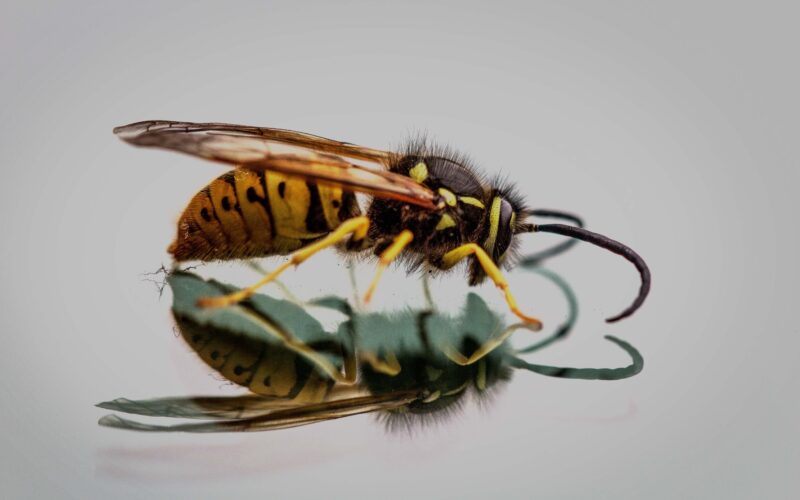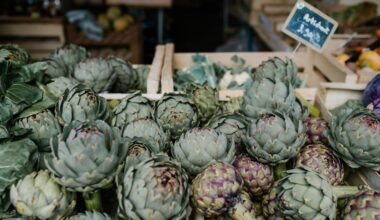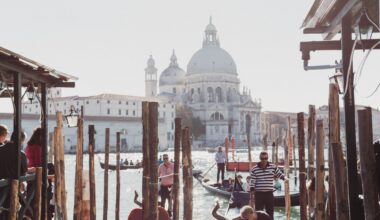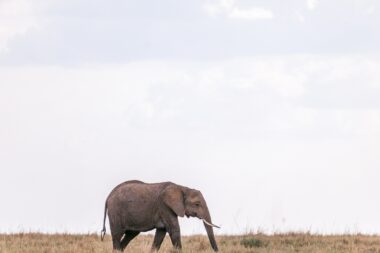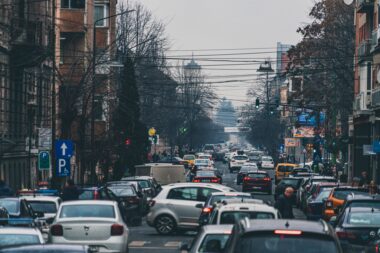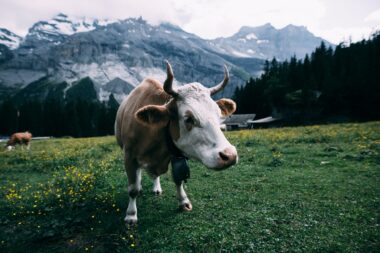If you like having food to eat and a healthy planet to live on, then I’ll save you the five minute read and cut to the chase – yes, bees are worth saving. And now so more than ever. Globally, one in six bees are extinct regionally and over 40% are now vulnerable to extinction. Humans rely on bees as an indicator of a healthy ecosystem and with so many bee species suffering because of human activity and climate change, the earth is sending us some pretty major red alert messages.
Bees provide the world with a variety of ecosystem services, from medicine to pollination and food. There’s over 20,000 bee species globally, each playing a role in keeping a balanced ecosystem.
They Help With Food Security
Bees are one of the best pollinators on the planet. Bumble bees are fast little things and can visit 10 to 18 flowers in a minute, moving a lot of pollen around in the process. A third of the world’s food production depends on bees including crops like coffee, grapes and alfalfa (fed to beef and dairy cows).
In Canada alone honey bees are worth over $782 million to the agriculture industry with over 70 species of insects, including bumble bees, fertilizing farm crops.
The right types of bees working together on a single plant can help create a better quality crop too. Strawberries, for example, benefit from bumble bees and solitary bees liking different parts of the plant. When multiple bees visit strawberries tend to be larger, more even and juicer.
The Provide Food and Medicinal Products
Honey bees are famous for their honey but they also have bee pollen, propolis, bee bread, royal jelly, and beeswax to offer. The ancient Romans, Greeks and Egyptians used bee products regularly for their healing properties. More recently these byproducts have been studied and used for their anticancer and anti-inflammatory properties.
They Provide a Source of Income
Most bee species are wild but the honey bee is one of the most managed pollinators around the world. In 2020, there were 94 million beehives globally valued at over eight billion USD.
Not All Bees Are The Same
Honey bees are the most well known of all bee species but there’s over 20,000 bee species globally. In Canada there’s more than 800 species, most of which don’t produce honey or sting. The honey bee isn’t native to Canada but introduced by early European colonizers to provide a sweetener. In fact, the honey bee can be pretty detrimental to native wild bees, putting them in competition for natural resources.
Most bees these days are generalists, happy to visit all sorts of plants, but it wasn’t always this way. Bees started out as specialised creatures, evolving alongside and focusing on one plant. Their bodies developed to suit certain plants and pollinate them better than others. For example, the squash bee is highly specialized in pollinating squash and gourds and needs them to survive. While this specialisation can be great for the plant, it’s not so great for the bees when these plants aren’t available or in short supply. Something that’s happening more and more. Generalist bees, like bumble bees, developed later to be able to take advantage of more plants and live longer. Although as natural habits decrease, even generalist bees are impacted.
Bumble bees and honey bees are social bees, with many species living in hives. But only ten percent of bees are social. The majority of Canada’s native bees are solitary, preferring to live alone. Most live in tunnels or tree trunks and tend to be less aggressive because they have no hive to protect.
What’s Hurting Bees?
Surprise surprise, it’s us. Humans and our air polluting, pesticides using, natural habitat reducing ways are threatening the existence of over 40% of bee species.
Pesticides
Pesticides don’t just land on crops when sprayed. They also move through the air and seep into the soil and nearby water sources. They’ve also been found to have a negative and even lethal impact on bees, including affecting their navigation, ability to recognise their nests, their feeding behaviour and reproductive success.
In 2022, the EU brought in new rules to half the use of pesticides by 2030, with the COP15 agreeing to reduce pesticides globally by 2030. Time will tell if this is really enough to help save bees and other pollinators though.
Air Pollution
More than 90% of the world’s population is exposed to unhealthy air. And it’s not just affecting us. Research shows that air pollution also impacts bees. Pollutants in the air interfere with the scent molecules plants release making it more difficult for bees to find them. Their ability to pollinate and forage efficiently then drops, making them slower.
Loss Of Habitat
Humans have been removing natural habitats for pollinators like bees for years now. To quote Joni Mitchell, we paved paradise and put up a parking lot, everywhere. We’ve removed food sources, overwintering spots and nesting places for insects and bees making it much more difficult for them to survive.
In addition to loss of habitat caused directly by humans, bees are also facing problems caused by us indirectly through climate change. Research shows bees are having a tough time adapting to loss of habitat from climate change and haven’t been able to change their migration patterns fast enough to find new areas like other species. Many bee populations have died recently because they weren’t able to adapt to changing temperature or weather conditions caused by climate change.
How To Help Bees
1. Plant Native Flowers
If you have a window sill, balcony or garden, plant native flowers. Planting a variety with some blooming early in spring and others that last into the autumn will help bees find food throughout the year.
2. Limit Pesticide Use
Choose a bee-friendly pesticide if you need to use one. Using them early in the morning or late in the evening when the bees aren’t out and about can limit their exposure too.
3. Create A Wintering Habitat
If you have garden space, leaving logs out to rot over winter can provide a good spot for bees to nestle in and survive the colder months.
4. Know Your Native Bees
Going outside and getting to know your local bees and how to identify them helps develop an appreciation for the diversity of nature around us.
5. Share Your Knowledge
Once you know more about your local bees and how to protect them, share your knowledge with others in your community. The more people know, the more they can do to help protect their local bees.
6. Contribute to Science
Programs and apps like “Insight Citizen Science” and “Bumble Bee Watch” need regular people to help track and report back on local bee species and their activity. This helps scientists learn more about the needs and behaviours of bees.
Sustayn is designed to present the most useful recommendations for environmentally friendly approaches and items. We update links when possible, but note that links can be broken and subject to change.
